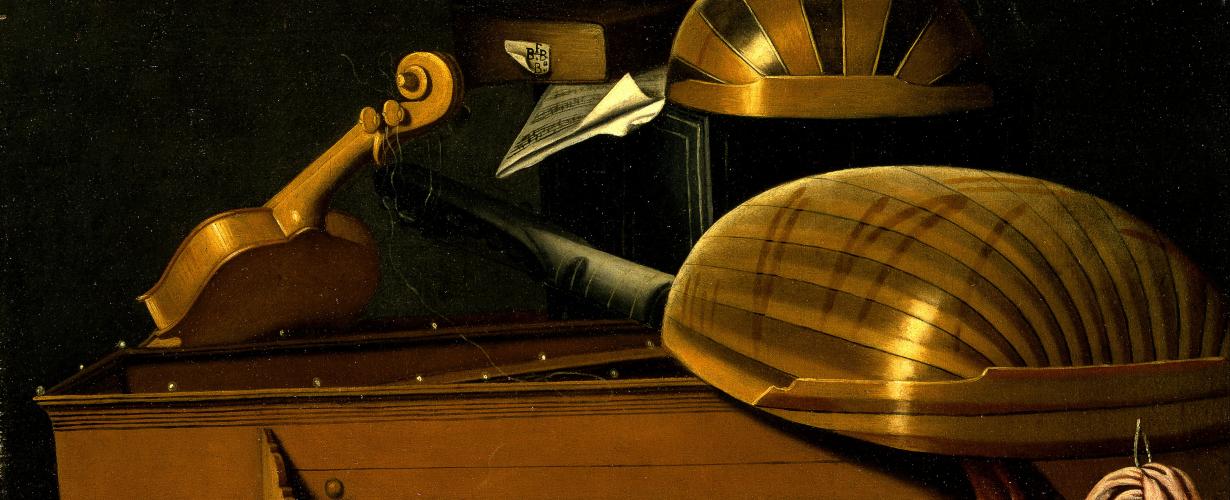Schedule
09:30: coffee
10:00-10:45: Maria Gonzalez “Keyboard accompanists at work (Italy, ca. 1600): an approach to their figure and their work Context
10:45-11:30: Alain Gervreau “In Search of Violins in Pieter Bruegel's Live Captures of human Behavior, an Expedition into Flemish humanist History”
11:30-12:00: coffee break
12:00-13:00: Yiannis Efstathopoulos « Album presentation: “Seis Caprichos – Spanish Guitar music around 1930” (Passacaille Records)”
ABSTRACTS
MARIA GONZALEZ "Keyboard accompanists at work (Italy, ca. 1600): an Approach to their Figure and their work Context"
A better understanding of the daily job of keyboard accompanists in Italy around 1600 should be at the basis of any in-depth research on their performance praxis.
Therefore, crucial parameters such as specific musical abilities, the diversity of source formats to perform from (corresponding to different musical genres), will be analyzed.
Their high level of musical training and set of skills, which were quite different from those provided by our modern training system as early music accompanists, should be reappraised and reconsidered to better understand the contents of early extant basso continuo sources — including topics discussed as well as omitted information.
The variety of systems of notation gives rise to new kinds of “scores” like Intabolatura, Partitura or Spartito. Each of them requires specific skills which will condition a basso continuo performance.
Reproducing early basso continuo practices today is a challenge. To a great extent, this is due to the fact that they cannot be considered as the starting point of a research on this topic, but rather as the product of an earlier, Renaissance musical tradition which, in many ways, is further away from our modern musical training than later Baroque repertoire, when basso continuo practice was more firmly established.
ALAIN GERVREAU "In Search of Violins in Pieter Bruegel's Live Captures of human Behavior, an Expedition into Flemish humanist History"
My goal when I embarked on this research was to create a new concert program for the six- Renaissance-violins band Les Sonadori, in the context of the four hundred and fiftieth anniversary of the commemoration of the death of the famous Brabant painter. I began to explore the pictorial work of Bruegel at the great exhibition of the Kunsthistorisches Museum in Vienna and also visited the Royal Museum of Fine Art in Brussels.
I discovered two important things: first, that the artistic thoughts and style of Bruegel were influenced by the local, north European humanist movement initiated by Erasmus in the Netherlands and continued by Luther in Germany; and, second, that the Flemish speaking community of Brabant, which brought forth almost all of the famous 15th and 16th century composers of the so called Franco-Flemish, or Burgundian school, had created, apart from the traditional chansons and madrigals a considerable repertoire with Flemish texts: the so-called Dutch songs, which formed a logical musical link to the paintings.
YIANNIS EFSTATHOPOULOS "Album presentation: “Seis Caprichos – Spanish Guitar music around 1930” (Passacaille Records)"
This project/recording brings a substantial selection of exceptional historical musicians, repertoire, and instruments back to the foreground while it examines for the first time the performance practice of the Spanish guitar at the neoclassical-period 1915-1939 on period instruments strung in gut and silk.
Indeed, the renaissance of the guitar in the 1920s was a protagonist phenomenon in Spain and it was intimately linked to the values of the neoclassicism. The guitar as a symbol of the long Spanish heritage, inspired Manuel de Falla and the composers related to the so-called generation ’27 to write for the first time guitar music that evokes us to the Baroque, nationalism but also to French impressionism. Finally, the guitar grew to symbolize the link between vibrant folklore and art music, eventually becoming what Adolfo Salazar describes as “universal nationalism.”
In this recording I endeavor to present this diversity by performing on a gut-strung instrument and return to Federico Garcia Lorca’s six dancing maidens: Three of flesh, three of silver.
